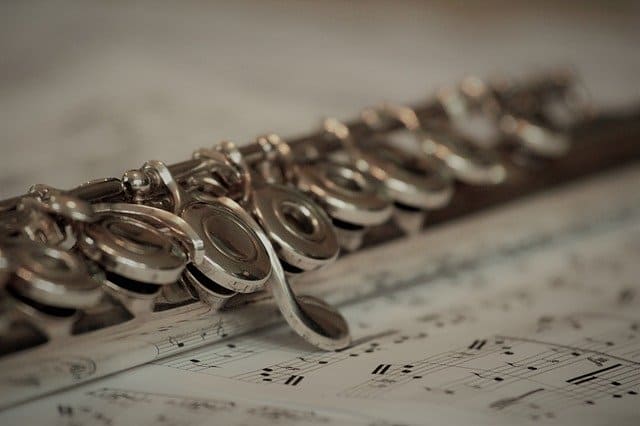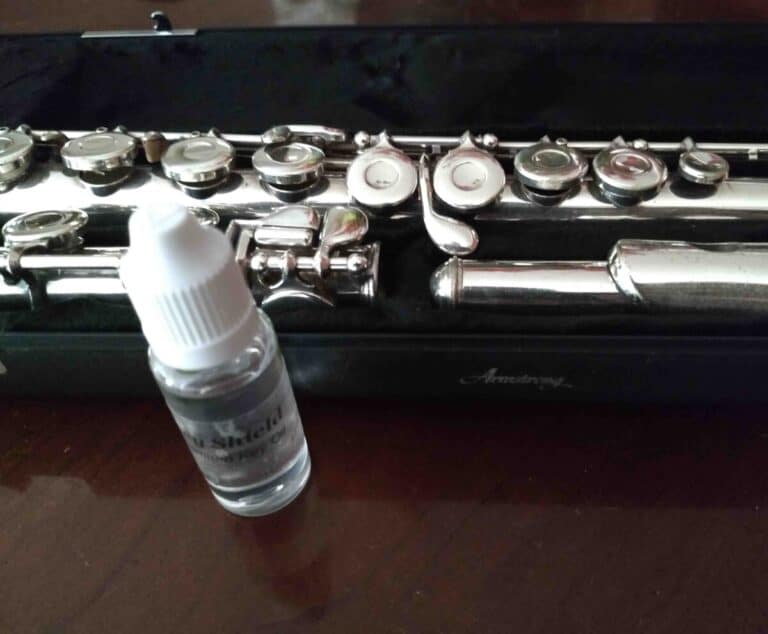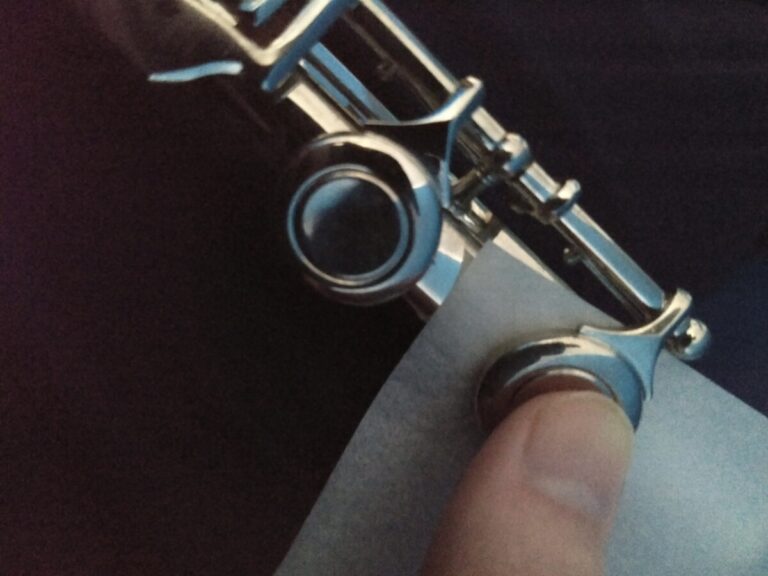How Many Holes Does a Flute Have?
A quick comparison between the modern flute and the recorder tells use that the flute has far more tone holes and keys. This perhaps raises the question: how many holes does a flute have?
How many holes a flute has depends on the type of flute. Traditionally, flutes had six or eight tone holes which allowed the flute to play in a single major key. The modern concert flute has 16 tone holes, or 17 if you count the low-B extension on high-quality concert flutes. Having this many keys allows the flutist to play in every key and generally play in tune.
If you want to know why the flute needs multiple holes to begin with and why we ended up at the number 16 (or 17), then you’re in the right place.
The basic flute (with six holes)
The flute operates by having the musician open or close holes on the instrument, which effectively makes the tube longer or shorter. A longer tube produces a deeper sound. The length of the tubing is the primary factor in determining the exact pitch that the instrument plays, so having multiple holes on the flute is the only way to allow it to play a variety of pitches.
Originally, the flute was made with only six holes. The reason for this is that six holes is sufficient to allow the flutist to play seven different pitches (covering one additional hole for each pitch, starting without covering any holes), which constitutes a single key. So, with a six-hole flute, we can play whatever songs we want, but only in one specific key determined by the flute that we are playing on.
There was also an eight-hole flute, but this did not actually make it easier for the flute to play in other keys; it merely extended the range of the instrument and made going up and down the scale slightly easier.
This is not to say that the six-hole or eight-hole flute could not play outside of the key it was made to play in. By using creative fingerings (which likely involve half-covering some holes), it was certainly still possible to produce all 12 pitches of the chromatic scale, and thus enable the flautist to play in every key. However, this made it difficult to play in tune, and the fingerings were often complicated. Playing in a key other than the one that the six-hole or eight-hole flute was tuned to was much more difficult.
This became inconvenient as composers began writing music in a variety of keys. A flute that could only play in a single key might have been sufficient for solos where the key didn’t really matter, but in the long run it was inadequate for artistic exploration. An instrument’s versatility is highly limited when it is only capable of playing in a single key. Instrument designers began gradually adding holes to the flute to accommodate for additional pitches that the instrument needed to be able to play.
Why the flute needs 16 or 17 tone holes
Sixteen tone holes is sufficient for a flute to play in every key. In fact, 16 holes is more than enough, and we probably could have gotten every pitch with fewer.
However, the goal of any instrument-maker is to make their instrument easy and intuitive to play. So, we not only need enough keys to make all 12 pitches of the chromatic scale possible, but also to make it easy to play in every key.
One core principle behind the design of modern woodwind instruments is that we want each sequential note in a scale to add or remove only one finger (or as few fingers as possible, if we cannot limit it to one) from the previous note in the scale. This clearly cannot be the case for every scale on the instrument, but an instrument will be much easier to play if the designer tried to follow this principle in general.
So, regardless of whether the flautist is playing a major scale or a chromatic scale, we want the musician to only have to move one finger per note. If we’re going to accomplish that, then we will need to include more tone holes than just the bare minimum.
Many of the holes on the flute exist to enable the flautist to play a single pitch more easily than they would otherwise be able to. There is a hole specifically for the pitch of G#, and the hole isn’t used for anything else. The same is true for low C#. There are actually multiple different ways to finger Bb, and all of them exist for the purpose of requiring the musician to move as few fingers as possible in the many contexts that could require the pitch of Bb.
The one other reason that the flute ended up with 16 holes is for the sake of extending the range of the instrument. Over time, it became increasingly necessary for flutes to have a greater range as composers began to explore the full potential of instruments. For instance, many composers nowadays have begun to make use of the lower range of the flute even though it has traditionally been a high-range instrument. This necessitated the 17th hole on the flute, so that the range of the flute was extended to a low B instead of just to low C.
It became equally necessary to expand the range of the flute in the upper register as well. Increasingly, solo literature for instruments demands that the musician show off their ability to play in extreme registers, and as such the flute has gained additional holes to accommodate for playing higher than would normally be expected even of a soprano instrument.
Finally, some of the added tone holes are for neither the sake of technique nor expanding the range of the instrument, but rather are only intended to open or close at the same time as other keys are pressed. For instance, one tone hole closes when either the third finger of the left hand or anything on the right hand is pressed. This hole and others like it serve largely to correct slight flaws in intonation that were present in previous models of the flute.
Which keys does the modern flute add?
The design commonly associated with being the first modern flute is called the Boehm flute, invented by Theobald Boehm. It was much more sophisticated than previous designs, and made the flute much easier to play. The design is what we now know as the 16-hole flute, and while there were a few changes made to the instrument since (such as having the G# key be closed by default), the design has largely been unchanged.
Boehm strived to design the flute in a way such that each movement of a half-step should only involve pressing or lifting a single finger whenever possible. The flutes that you see in a concert setting today feature a separate hole for G#, low C#, and Bb, which allow the musician to avoid bizarre or inconvenient fingerings.
There are also two additional keys for high Bb and high B, both of which are well above the range that a 6-hole or 8-hole flute could normally achieve. The keys also make for effective trill fingerings, which are helpful for moving back and forth quickly between two pitches.
In addition to the 8-9 additional holes not on the classic 8-hole flute, the modern flute adds additional machinery such that some tone holes will close even when a different key is pressed. This corrects intonation, as mentioned previously.
Other kinds of flutes
For the majority of this article, I have been talking about the “modern” flute, which has 16-17 tone holes. There are many types of flutes, however, and many of them are based on different principles than the Boehm flute. Other types of flutes will have different numbers of holes.
For instance, the Bansuri is a type of Indian flute which has either six or seven tone holes. It can still play all twelve pitches of the chromatic scale, relying on the musician covering half of some holes in order to produce the desired pitch as opposed to having extra tone holes.





